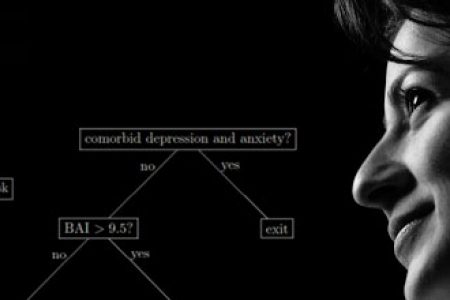Truly awesome data
Researchers perform studies to test their hypothesis. Yet, some hypotheses require data so special, that they are rarely tested. The Netherlands Study of Depression and Anxiety provides researchers in Leiden, Amsterdam, and Groningen with such special data
September 2013 - Monday afternoon at the FSW restaurant: three pairs of eyes are staring at me, amused but incredulous. We're at the master thesis market and I am wondering whether I have lost my credibility. I have just exclaimed that students in my project will work with truly awesome data. Was that too much? These eyes belong to students in the clinical psychology program. They may suspect in me some weird scientist, inexplicably able to immerse herself in data in an almost psychopathological manner…
September 2004 - The first NESDA measurements commence. In the coming two-and-a-half years 2981 volunteers will engage in four hours of interviews, questionnaires, and computer tasks. They will provide blood and saliva, and undergo fMRI. This is only the start. Participants will return for similar measurements every two years for the coming ten years. What is studied here? This is the Netherlands Study of Depression and Anxiety (NESDA), which will provide data for hundreds of papers.
1967 - Aaron Beck publishes a book on his research on depression. The unexpected result is a theory stating that depression may be caused by negative thoughts and expectations that individuals may have regarding themselves, their world, and their future. Evidence that such cognitions play a role in the etiology, or at least the course, of depression is provided by the success of a new, experimental, therapy, aimed at modifying negative dysfunctional cognitions.
Now - Forty-six years later, cognitive behavioral therapy is the standard treatment for depression and various other diseases, and the cognitive model has been studied in a huge body of research. From these studies we know that dysfunctional cognitions are involved in depression, that they are more active in currently depressed individuals, and that they may remain, whether active or latent, following remission. The strength of such cognitions predicts the risk of relapse into depression. Dysfunctional cognitions may become stronger with every new depressive episode, increasing the risk of another episode, but successfully changing these cognitions reduces the risk of relapse.
Yet, one assumption of cognitive models has rarely been studied: are dysfunctional cognitions already present in individuals before they develop a first depression? Beck’s theory states that this is the case: dysfunctional cognitions are present but inactive. Activation by a negative event may result in depression. Therefore, one would expect that among never-depressed individuals those with stronger inactive dysfunctional cognitions are at a higher risk of developing depression.
There are two major difficulties in the verification of this hypothesis. First: one has to follow a large group of never-depressed people over a longer period of time, in order to detect who becomes depressed. Second: how does one measure inactive cognitions?
Two measures in the NESDA were designed to detect implicit or inactive cognitions. The first is a computer task measuring Implicit Self-Depressed Associations (ISDA). Participants push two buttons as fast as they can in response to words. These words relate to four concepts: self, others, depression, and elation. Analyzing the reaction times tell us how easy it is for people to associate themselves with depression.
The second is a questionnaire: the Leiden Index of Depression Sensitivity - Revised (LEIDS-r). It measures cognitive reactivity to sad mood: the extent to which dysfunctional cognitions become activated when an individual experiences a (normal) sad mood. For instance, one question is how much people agree with the statement "when I feel sad, I more often think that I can make no one happy". Notice that this is different from a questionnaire on currently active cognitions, where the question would be how much one agrees with the statement "I think I can make no one happy".
For 834 never-depressed participants, both ISDA and LEIDS-r predicted significantly who would have their first onset of depression during the next two years of the study. So did several other measures: neuroticism, anxiety, education level, negative life events, and baseline level of subclinical symptoms.
Similar associations have been found before. The real test of our hypothesis was a statistical test of the combined prediction by these measures. As in most previous studies, the baseline level of symptoms and the occurrence of negative life events overruled most other predictors. However: LEIDS-r remained a significant predictor.
How exciting!
This is possibly the first time that a measure of dysfunctional cognitions has been found to predict the first onset of depression in a large group of never-depressed participants, even when baseline depression symptoms are taken into account. These results were recently published in the journal PloS one, and provide initial evidence for an important assumption of the cognitive model: dysfunctional cognitions exist before depression.
This is why six eyes were staring at me when I exclaimed that these were truly awe-some data. They are.





